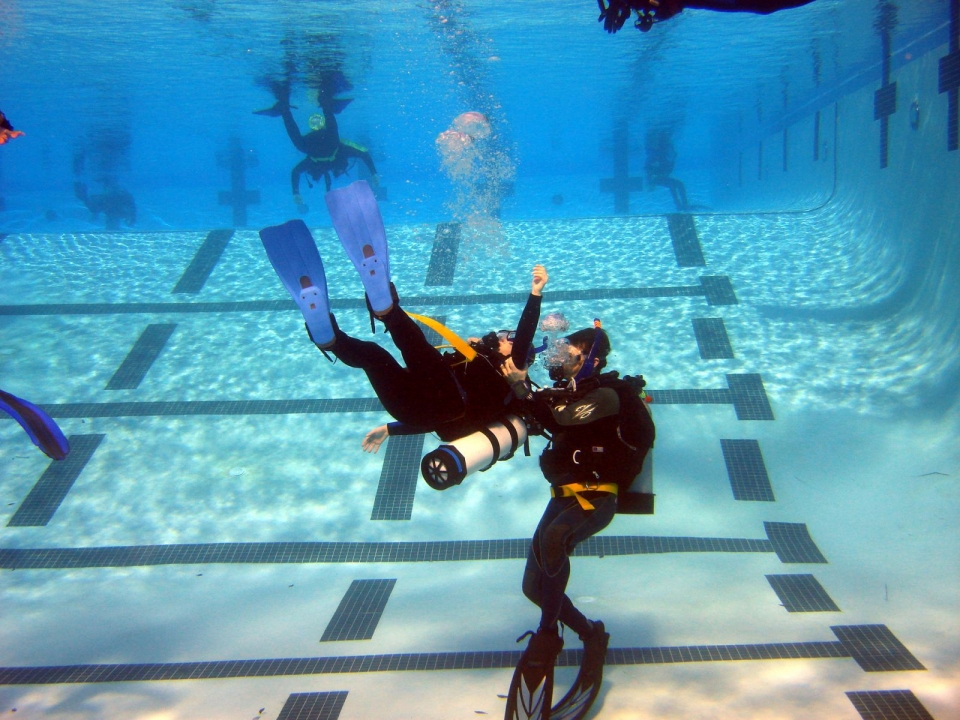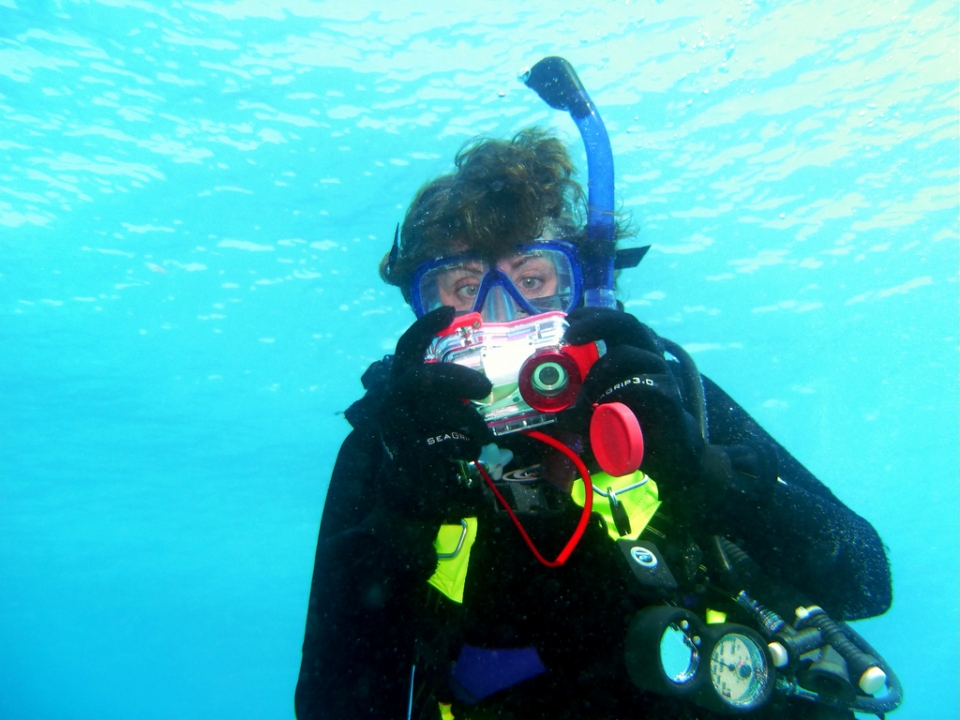P.A.D.I. stands for the Professional Association of Diving Instructors. Since its foundation in 1966, PADI has become the largest association of recreational diving members and dive instructors worldwide.

This organisation was founded with the objective of unifying existing diving certifications under one universal career path.
This is why you've probably heard of this Association when researching courses, dives or introductory diving experiences, as companies offering these activities provide internationally recognised courses governed by PADI standards.
Below we explain what each course entails and the competencies they provide upon completion.
Numerous courses are taught under PADI standards by water sports companies, dive schools or PADI itself. You can view a list here.
These courses are distinguished by their purpose - there are diver-level courses for those who dive as a hobby, whether at beginner or more advanced levels. There are also professional-level courses for those who have made or wish to make diving their profession. For the general public, there are technical courses, and even online courses to "learn to dive" without leaving home.

Any PADI certification you obtain will be valid wherever you go, as they're internationally recognised and accepted. This is the main advantage of these qualifications - the universal recognition of the certification, extremely useful for any adventurer.
These courses are a perfect way to gain dives and obtain an instructor certification. Moreover, in many countries, these courses can count towards university elective credits.
There are many recreational diving courses - we explain the most important ones.
- Open Water Diver: the most popular. For beginners who've decided to enter the world of diving to discover new adventures. You'll learn to dive, starting with underwater breathing. This course includes at least 5 pool dives and 4 open water dives in your training location. See different options via this link.

This is a basic course where you'll learn safety rules, how to plan a dive and become familiar with dive equipment, its assembly and use.
It consists of 3 main phases:
1) Theory on basic diving principles (which can be done online or in classrooms)
2) Confined water dives, such as in pools
3) Open water dives

This course uses basic dive equipment, a dive computer and standard accessories.
The minimum age is 10 years (there's a Junior Open Water Diver category).
- Advanced Open Water Diver: despite its name, this course doesn't require advanced skills - you can progress directly from Open Water Diver. It's the next level where you'll enhance your skills and gain confidence. Find options here.

- Rescue Diver: teaches rescue techniques, how to prevent risks and manage them if they occur. This challenging yet rewarding course prepares you to handle any diving emergency.
First aid knowledge is required for this course.
- Specialty courses: thematic modules covering various diving techniques.
Among the most popular specialties are enriched air diving (learning to use Nitrox), dry suit diving, wreck diving (sometimes including cars or small planes - excellent for exploration), night diving (planning routes and night dive essentials), ice diving (under ice sheets) or underwater photography courses.

- Master Scuba Diver: this certification places you among "the best of the best" in recreational diving. It's the highest non-professional rating, certifying your knowledge and experience across various environments.
Prerequisites include Open Water Diver, PADI Rescue Diver, minimum age 12, at least 5 specialty courses and 50 logged dives.
For diving enthusiasts, diving can become a way of life. When you progress from hobbyist to wanting to teach others or use your skills professionally, you're ready for a PADI professional course.

A brilliant way to earn a living doing what you love.
- PADI Divemaster: the first step to making diving your career. The first professional level in recreational diving. This course expands your knowledge, improves your technique and develops leadership skills - covering both theoretical/practical diving and instructional aspects.
As a PADI Divemaster, you can supervise dives, assist instructors during training, lead certain programmes (like Discover Snorkeling) or guide Open Water Diver students, among other competencies.
This certification is required for PADI Assistant Instructor and Open Water Scuba Instructor qualifications. More information here.

- PADI Assistant Instructor: become an instructor's assistant in dive training. Gain professional experience as you progress towards becoming a dive instructor.
The Assistant Instructor course functions like an internship - you'll gain experience under supervision.
This course, part of the Instructor Development Course, along with Open Water Scuba Instructor, leads (after passing the Instructor Examination) to PADI Open Water Scuba Instructor certification.
Besides Divemaster competencies, you'll be qualified to give academic presentations, teach pre-dive theory, and supervise certain training under instructor guidance.

- Open Water Scuba Instructor: the second part of the Instructor Development Course. The next step leads to PADI Instructor certification.
You'll learn to apply the PADI System while developing professional teaching skills.
This certification allows you to conduct any PADI programme and specialise in areas like underwater photography instruction. Learn more about underwater photography here.
- PADI Master Instructor: the only level achieved through practical experience as a PADI Instructor, not just training.

Requirements include being a Staff Instructor, having 2+ years as Open Water Scuba Instructor, current First Aid certification, and having certified at least 150 students among other criteria.
- PADI Course Director: the highest professional level in recreational diving - they train instructors and are considered diving opinion leaders.
This course offers unlimited competencies but has stringent requirements.

The marine world holds many secrets, with multiple possibilities offered by the depths, just as PADI offers numerous certification types.
To choose the right course, simply define your goals and progress step-by-step through PADI's extensive certification ladder until you reach your desired level.











